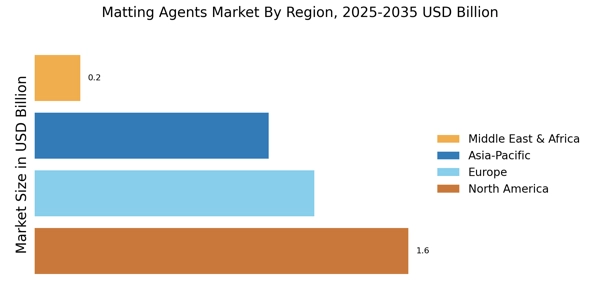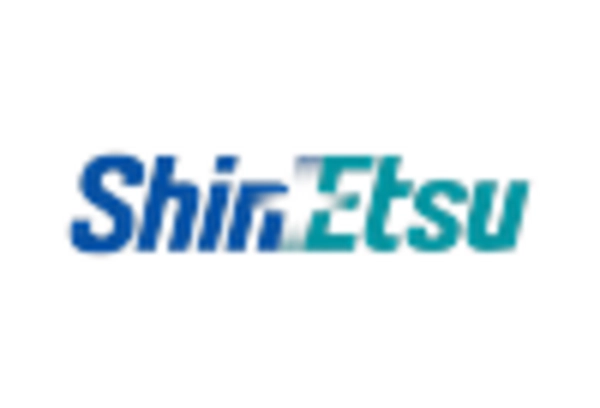Growth in the Cosmetics Sector
The cosmetics industry is a significant driver for the Matting Agents Market, as the demand for matte formulations in makeup products continues to rise. Consumers increasingly favor products that offer a non-shiny, natural appearance, leading to a shift in formulation strategies among cosmetic manufacturers. The market for matting agents in cosmetics is expected to grow at a CAGR of around 6% in the coming years, reflecting the industry's adaptation to consumer preferences. Additionally, the incorporation of matting agents enhances the texture and feel of cosmetic products, making them more appealing to consumers. This trend indicates a robust opportunity for growth within the Matting Agents Market, as brands seek to innovate and differentiate their offerings.
Rising Demand in Coatings and Inks
The Matting Agents Market is experiencing a notable surge in demand, particularly within the coatings and inks sector. This growth is primarily driven by the increasing need for matte finishes in various applications, including automotive, architectural, and industrial coatings. According to recent data, the coatings segment is projected to account for a substantial share of the market, with a compound annual growth rate (CAGR) of approximately 5% over the next few years. The preference for aesthetic appeal and functional properties, such as scratch resistance and UV protection, is likely to further bolster the demand for matting agents. As manufacturers strive to meet consumer expectations for high-quality finishes, the Matting Agents Market is poised for continued expansion.
Expansion of the Construction Industry
The construction industry plays a pivotal role in the growth of the Matting Agents Market, as the demand for high-performance coatings and finishes in construction applications continues to rise. With urbanization and infrastructure development on the rise, there is an increasing need for durable and aesthetically pleasing surfaces. Matting agents are essential in achieving the desired finish and performance characteristics in construction materials. The construction sector is projected to grow at a CAGR of approximately 4% in the next few years, which will likely drive the demand for matting agents. This expansion presents a significant opportunity for stakeholders in the Matting Agents Market to cater to the evolving needs of the construction sector.
Regulatory Compliance and Quality Standards
The Matting Agents Market is influenced by stringent regulatory compliance and quality standards across various sectors. Manufacturers are increasingly required to adhere to environmental regulations and safety standards, which necessitate the use of compliant matting agents. This trend is particularly evident in the coatings and plastics industries, where regulations regarding volatile organic compounds (VOCs) are becoming more stringent. As a result, there is a growing demand for eco-friendly and low-VOC matting agents, which are expected to capture a larger market share. The emphasis on sustainability and compliance is likely to drive innovation and development within the Matting Agents Market, as companies strive to meet these evolving standards.
Technological Innovations in Product Development
Technological advancements are reshaping the Matting Agents Market, as manufacturers leverage innovative techniques to develop new and improved products. The introduction of advanced formulations and processing technologies is enabling the creation of matting agents with enhanced performance characteristics, such as improved dispersion and stability. This trend is particularly relevant in the coatings and plastics sectors, where the demand for high-quality finishes is paramount. Furthermore, the integration of digital technologies in production processes is streamlining operations and reducing costs, thereby enhancing competitiveness. As the industry continues to evolve, the focus on technological innovations is likely to drive growth and diversification within the Matting Agents Market.


















Leave a Comment